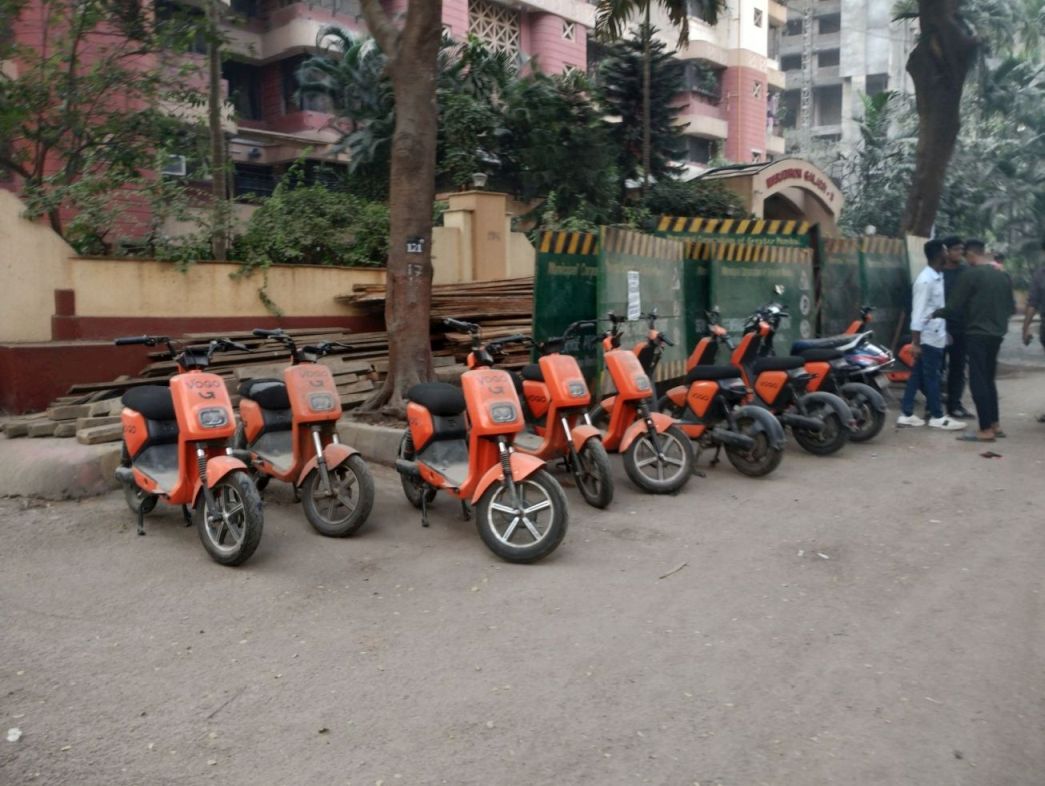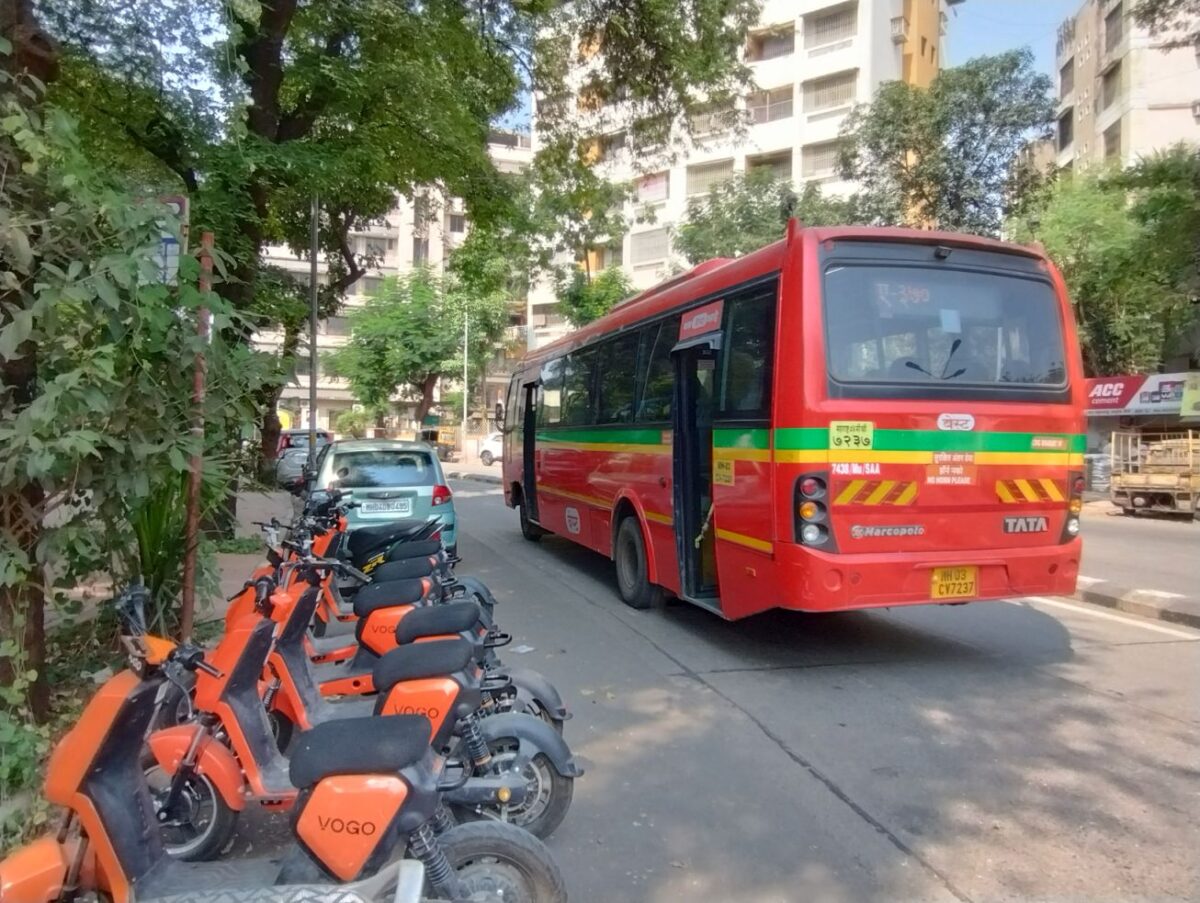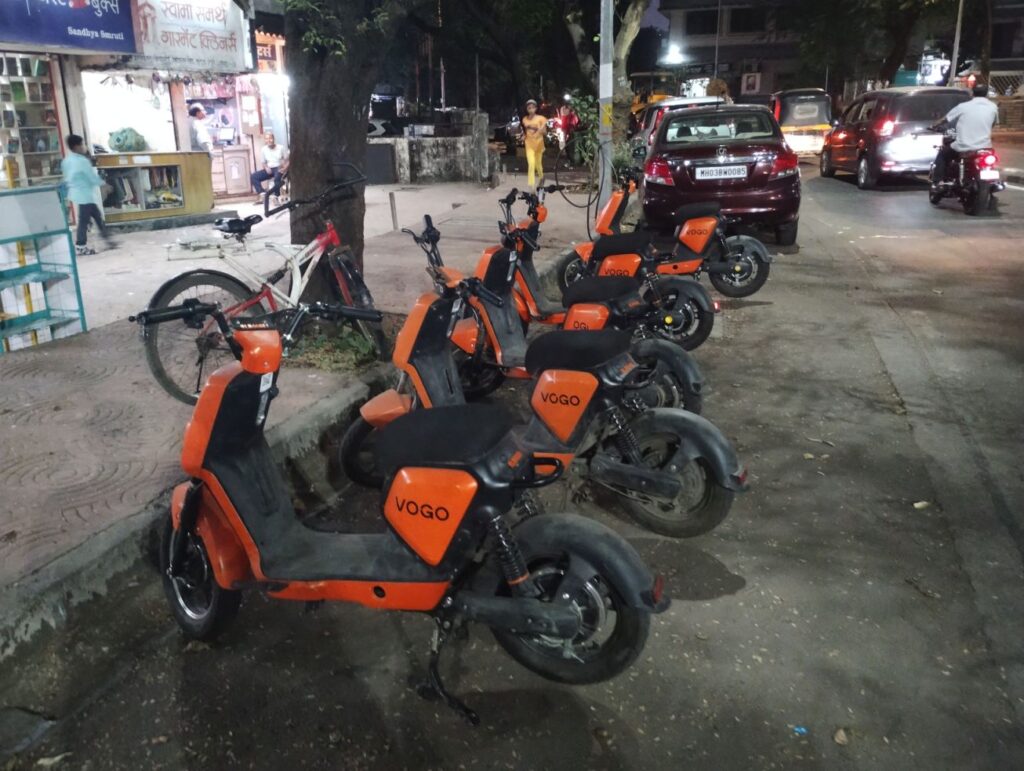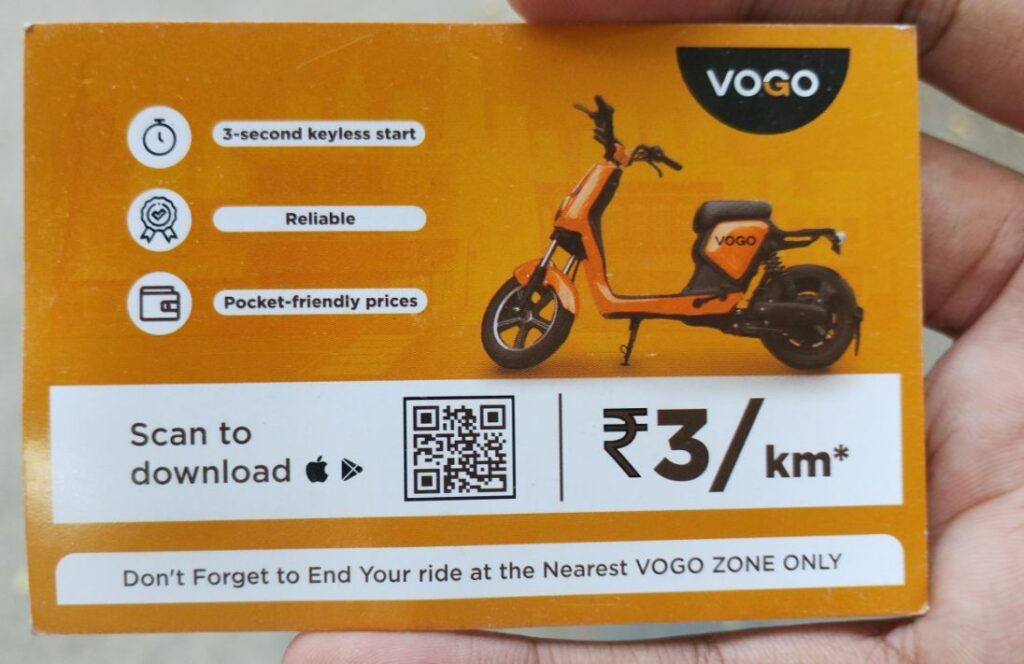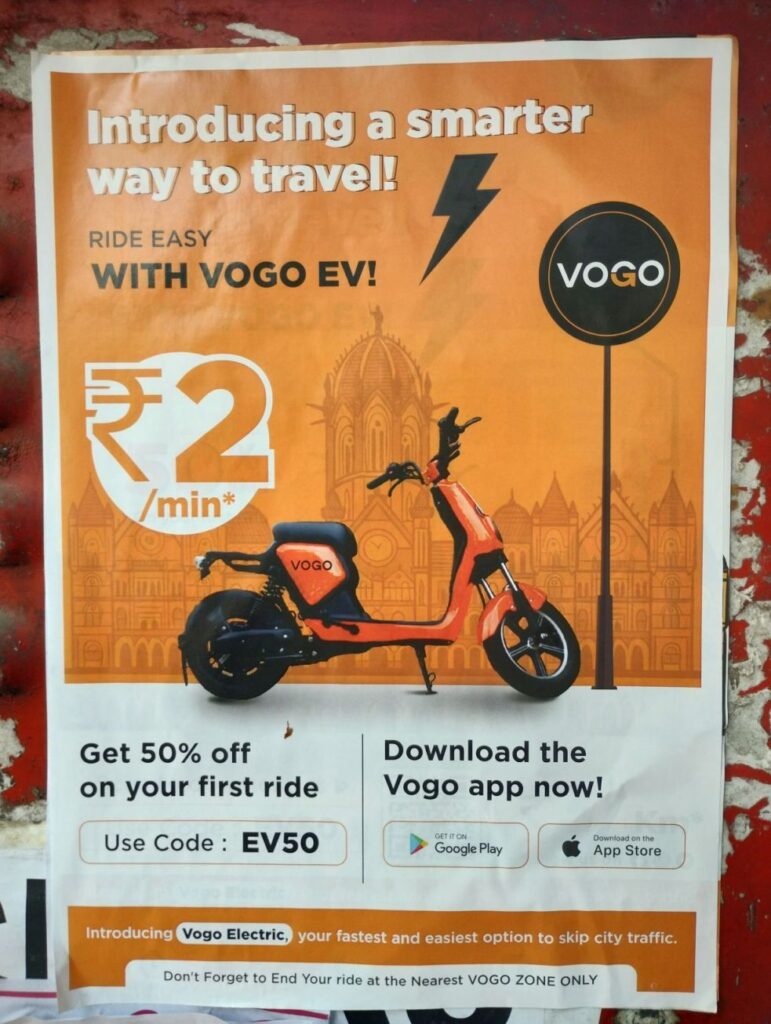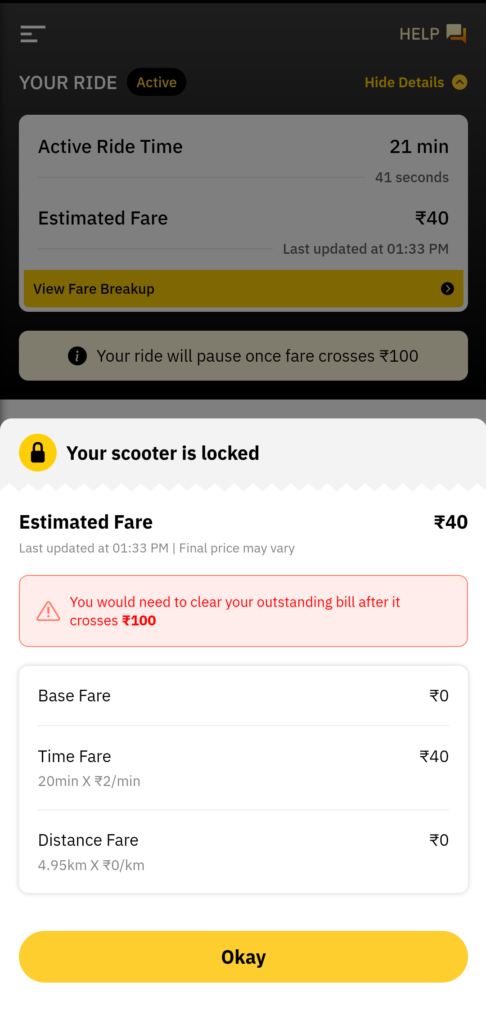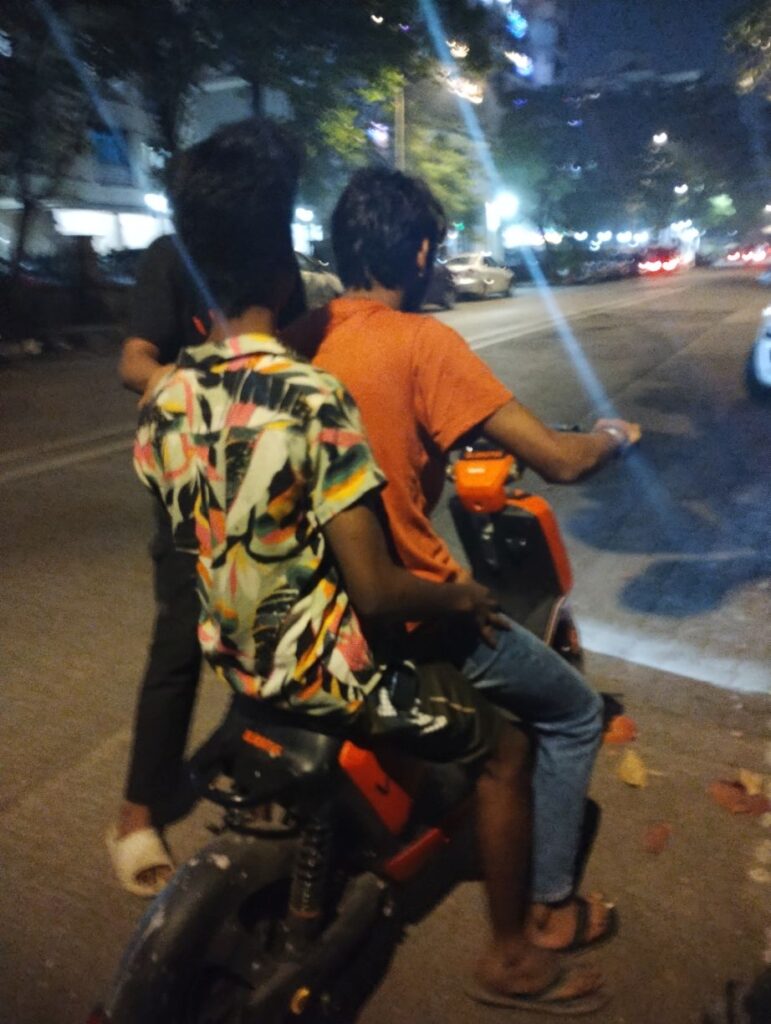The network of electric scooters by Vogo rentals has successfully spread to the city of Thane, thereby going beyond the Mumbai Suburban district. The fleet has crossed around 1,130 so far while more scooters will be added as time passes. At the Economic Times Urban Mobility Summit, Shri Lokesh Chandra (General Manager of BEST) shared the aim of taking the fleet of e-bikes to 5,000 on one hand, while the BEST undertaking is gearing up to add 3,000 electric buses on other hand. As mentioned in the earlier article regarding Vogo rides, it was too early to judge a recently introduced service. For first impressions, you can read the article here.
After two months of usage, it is time to put forth an updated review highlighting both the pros and cons. We will cover it section-wise, below.
Speed and Pricing
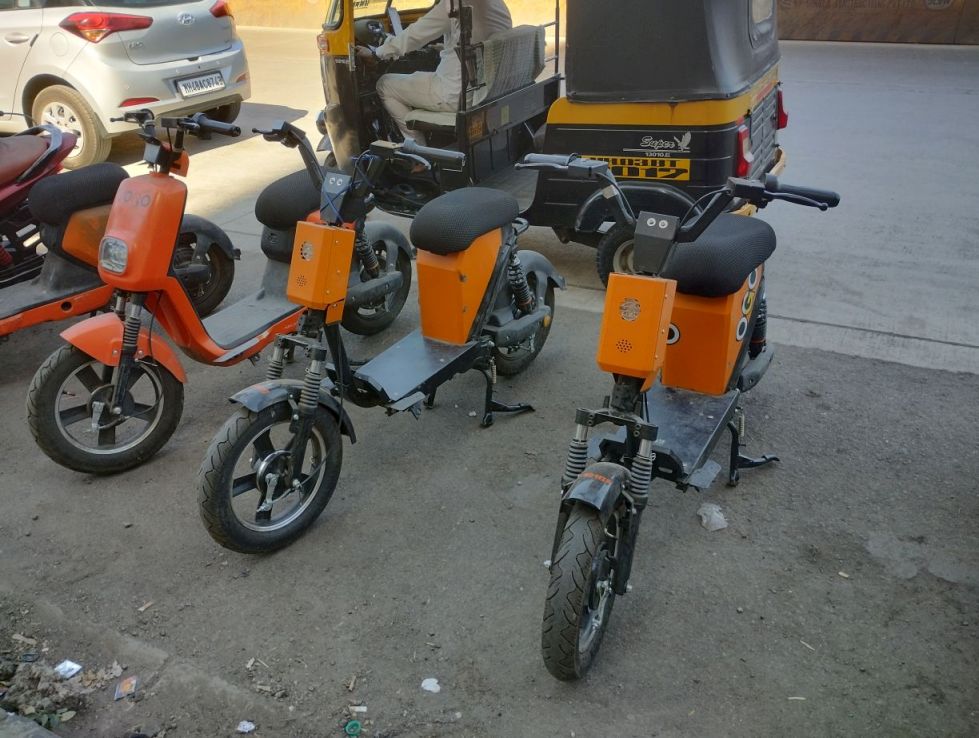
When started, Vogo electric scooters were charging ₹2 per minute with vehicles touching a maximum speed of 25 km/hr. In December 2022, the prices were increased to ₹2.5 per minute for up to 30 minutes and ₹3 per minute after the first 30 minutes. The speed was locked at 20km/hr while some vehicles did not even exceed 15km/hr. The reason behind highlighting this is, a user is charged ₹2.5 per minute and driving at a low speed takes more time to cover a specific distance which costs additional charges at the end. This issue has been merely acknowledged by Vogo but appropriate action has not been taken to this day. The newly acquired scooters too are restricted to 20km/hr.
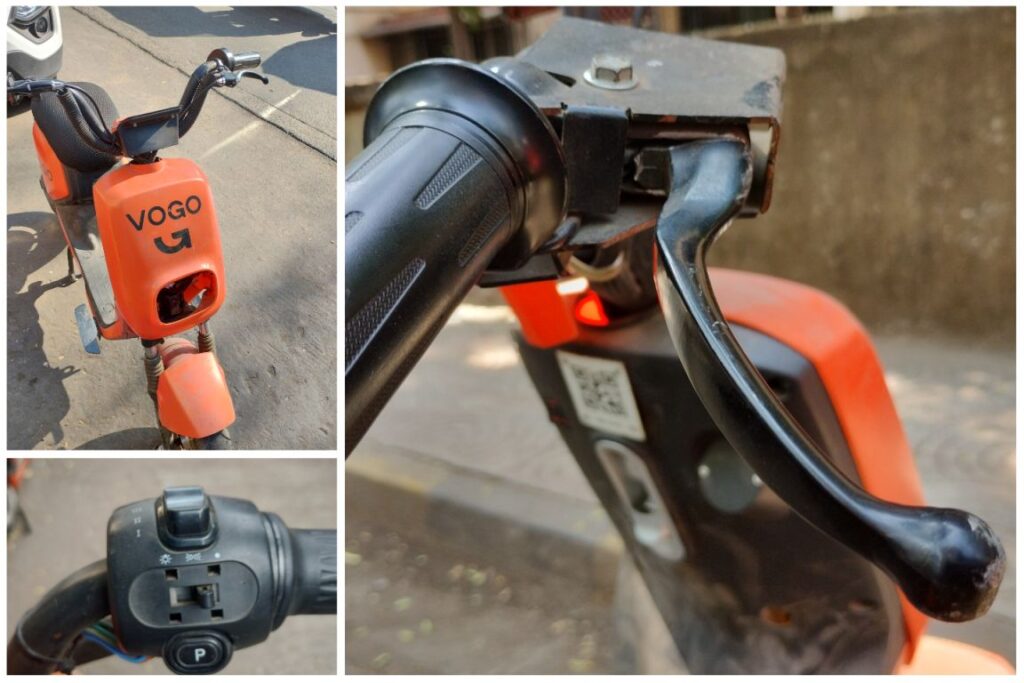
(Gandharva Purohit for BESTpedia)
In a conversation with their support executive, the clarification behind the increase in fares was explained as “a step taken considering the market prices and several other factors which cannot be disclosed on a phone call.” A solution to this, “if the prices can’t be reduced, then at least make sure that max speed is kept up to 25km/hr” was taken as feedback to be escalated to the respective department.
Maintenance
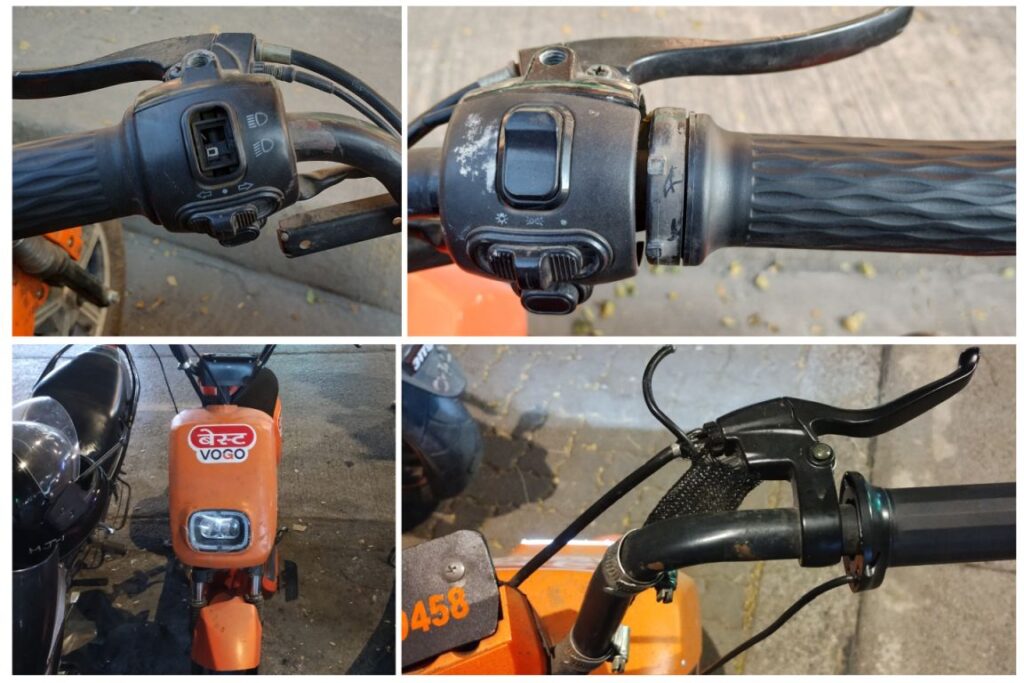
(Bottom) A scooter with exposed wiring & handled not aligned with the wheel.
(Gandharva Purohit for BESTpedia)
A scooter should have three components to be checked while commencing a ride – accelerator, brakes, and the horn. Acceleration up to 25km/hr is necessary since the scooters cannot go beyond their limit. Brakes are necessary to avoid collision and a horn is necessary to drive through busy streets. Since the scooters are parked on side of the road, they are vulnerable to accumulating dust and get dirty due to birds defecating from above. Further, driving a scooter will end up with wear and tear after some time even if driven with care. In this case, proper maintenance is the only way to keep vehicles safe to be driven again. After every ride, phone calls from customer support started becoming irritative when I realised, they did not read the feedback explaining the low rating being given. The reported scooters are unattended for days, causing a safety threat to future users. The funny part is the batteries are changed regularly, but certain scooters are not checked to ensure their roadworthiness.
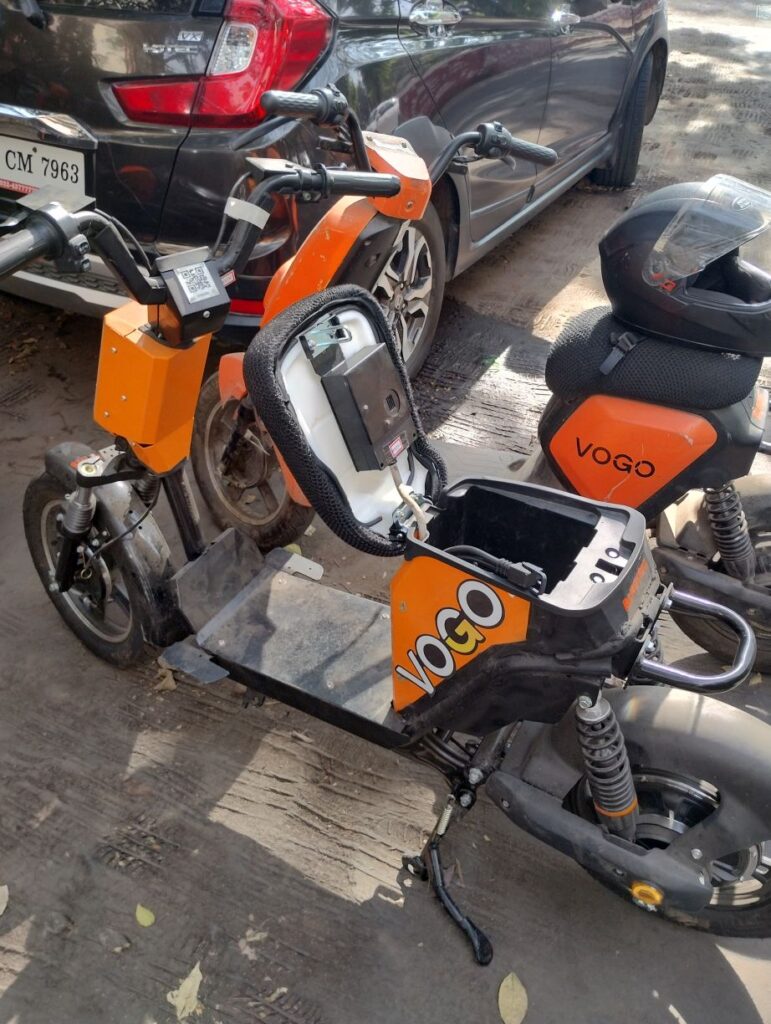
To help recover the abandoned scooters, Vogo started a Bounty Hunter contest where consumers win credit points that can be redeemed for Vogo rides in the future. For getting points, one needs to search for the missing scooter within 200 metres of the given location on the map. I searched four locations but did not find a single missing scooter.
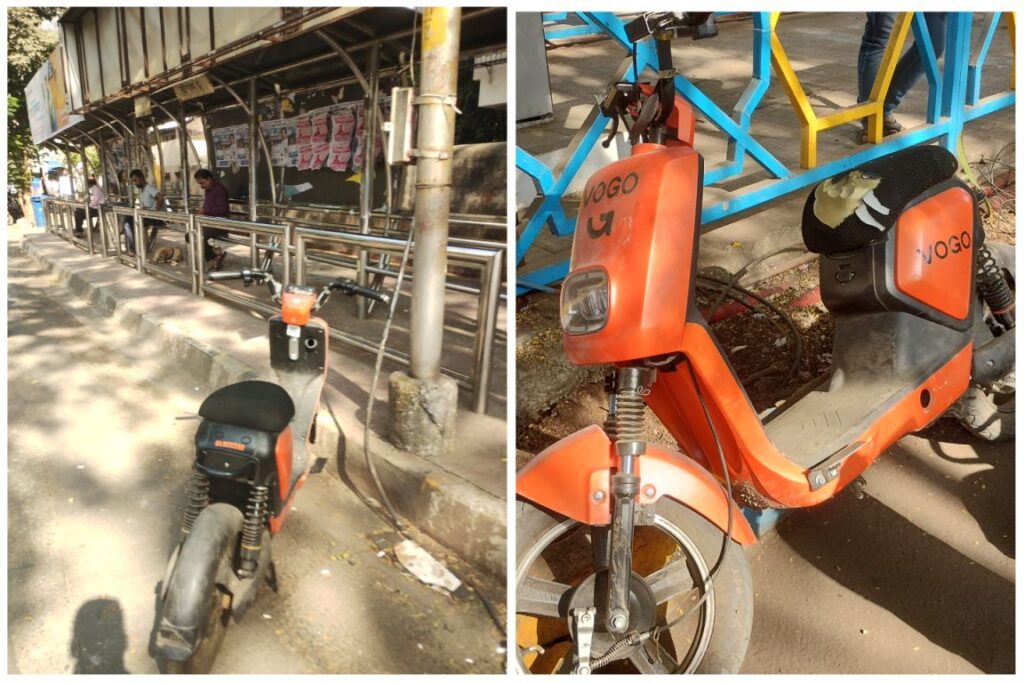
Right: BLR01044 abandoned at the VOGO Station near Cadbury Junction, Thane.
(Gandharva Purohit for BESTpedia)
Refund
I never thought this part would have to be covered in a separate section considering the flawless service by Vogo at the beginning. After having an issue when the ride exceeds the time limit for cancellation, one was able to end the ride and apply for a refund. But in the recent few weeks, even demanding a refund for the same issue has turned out to be a pain. It seems like the team is dependent on phone calls which cannot be an ideal way of communication since a user may not necessarily be available to speak once the ride is over. Customer Care contact for users could have been a solution to establish better communication but the firm does exactly the opposite. Only Vogo’s team being able to call its customers is the root cause behind breakdowns not getting properly attended. A scooter with flat tyre does not come to one’s notice until they are driven on road. However, by the time you hit the road and notice that it is necessary to dock this vehicle back to where it was taken, the timer goes on charging you ₹2.5 per minute. Sometimes, things do get escalated into an argument with the firm to initiate a payment. I have personally come across other consumers schooling Customer Support.
Conclusion
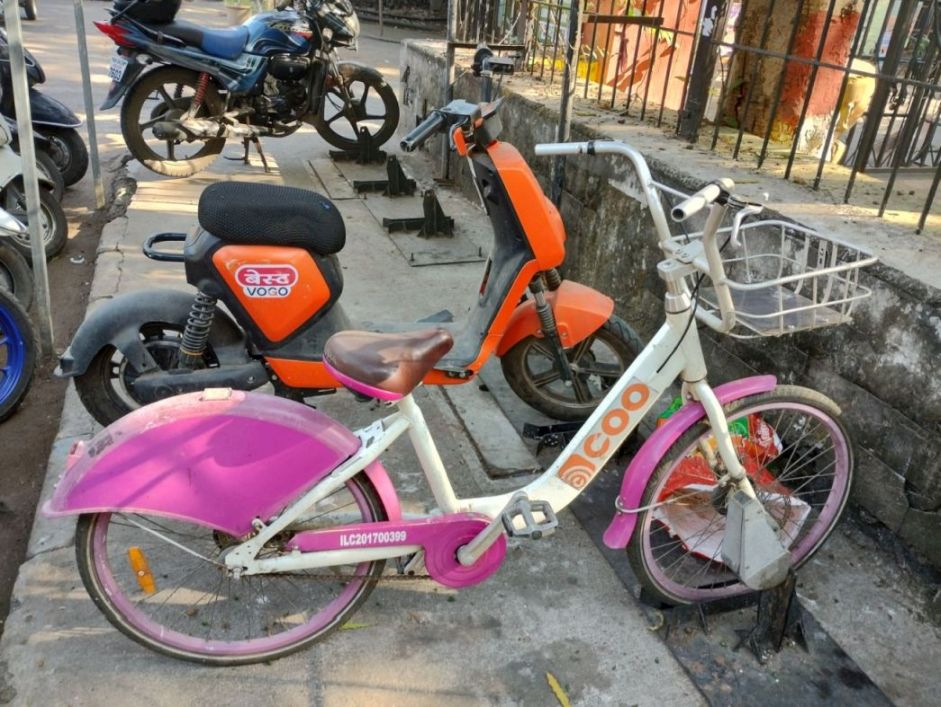
Vogo started as the cheapest electric scooter service in Mumbai, but things started going south when tonnes of feedback ended up on the phone calls and didn’t show any improvement in the service. Every feedback ends with Customer Support apologising for the inconvenience caused, but their apology is of no use if the service is not improved at all. What I have observed at the ground level is two guys on personal bikes, swapping the batteries of every possible electric scooter daily and explaining to everyone how to use the service. The ground staff seems stressed out while working in the heat which decreases their interest in work.
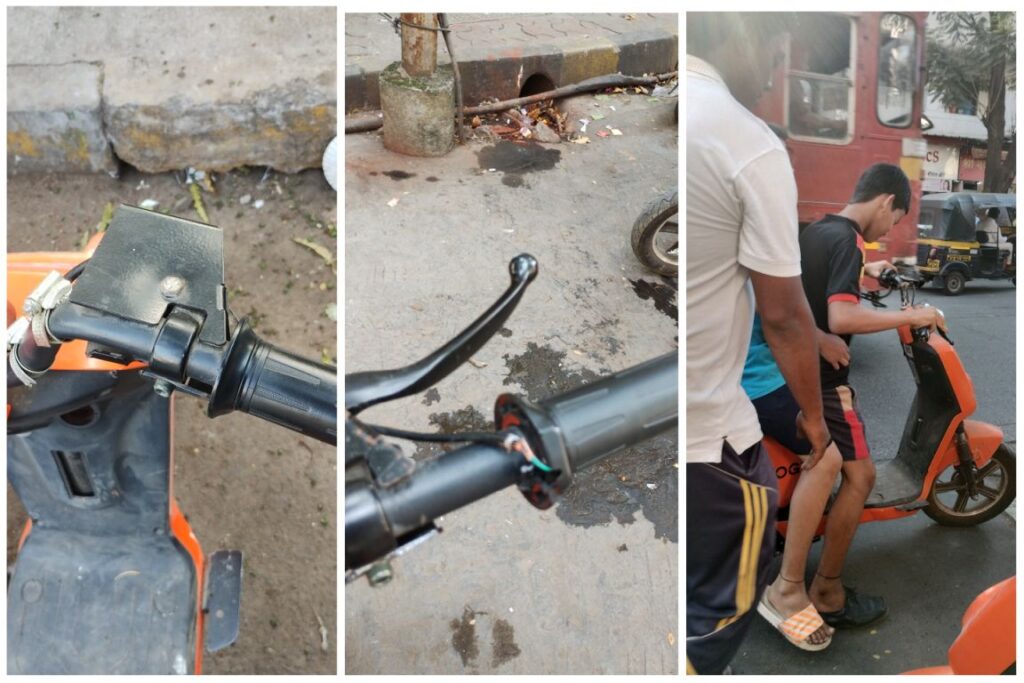
Centre: Wires connected to Accelerator exposed.
Right: Under age kids handling the Electric Scooter in presence of Ground Staff.
(Gandharva Purohit for BESTpedia)
Since Vogo has expanded its network to Thane, the expectations are still high and they haven’t sorted out the earlier issue of delivering value for money. India is a price-competitive market where consumers prefer saving money along with getting services that justify their costs. The electric scooters cost more than a bus ticket but less than an auto rickshaw (that charges by the fare meter). If anybody from Vogo is reading this, please pay a visit to the stations and look at the condition of all the parked e-scooters. The educated class in metropolitan cities is well aware of how to handle new technology. Poor infrastructure for parking makes these vehicles look as if they were stuffed into random places. With new vehicles joining the fleet, Vogo can push its network beyond the limits of Thane City but before attracting new customers, the firm should focus on maintaining its existing ones.
A call for help from BEST bus passengers
It is equally the responsibility of BEST to either keep Vogo operational or stop it. Since these scooters now carry the logo of Mumbai’s public transporter, poor service will spoil the image of both Vogo and BEST altogether. The bus fleet expansion is a concern where BEST needs to act as soon as possible since 2023 is the year when more Tata CNG Buses along with the Bharat Stage 3 double-decker buses would reach end of life, without having an adequate volume of replacement available at this moment. The dwindling bus fleet is affecting the frequency and can be only dealt with by procuring more brand-new Buses to keep the service running. A fare hike in the future can be done by adding more fare slabs of 5 kilometre each, beyond the maximum fare of ₹20 and ₹25, up to maximum fares of ₹40 & ₹50. Prices of the daily pass can be increased by ₹10. This can help passengers use the bus service and assure BEST Undertaking that routes are not running at a loss due to lower fares for long distances.
Note: This article is aimed to throw light on the ground reality in Mumbai Metropolitan Region and does not intend to spread any kind of hate about any organisation. Every citizen deserves to get better Public Transport and we at BESTpedia are committed to reporting both sides of a coin.
Have you used a Vogo to get to a BEST bus? Do tell us your experience in the comments section.
Also Read:
Solution Or Diversion? A Review Of Vogo E-Scooters In Mumbai
I took a Rapido to work today, and now I want the government to legalize bike taxis
Featured Image: Vogo E-Scooters parked near Duncan Company, Mulund West (Gandharva Purohit for BESTpedia)
![]()
